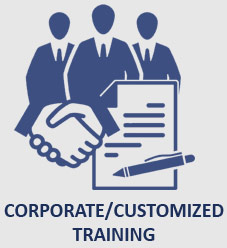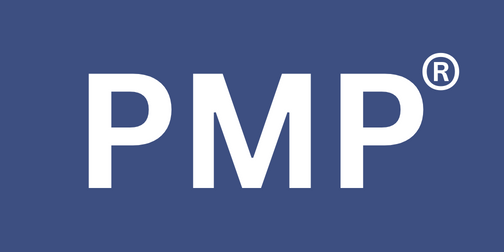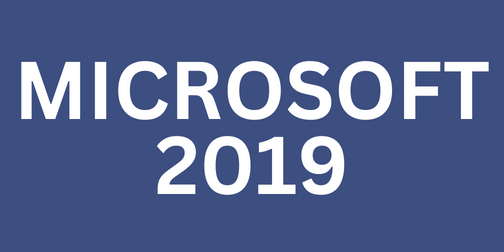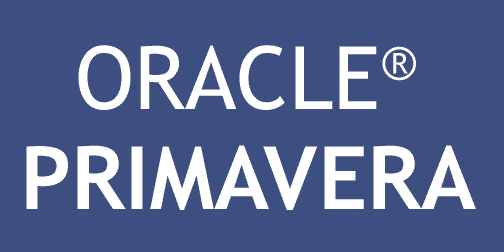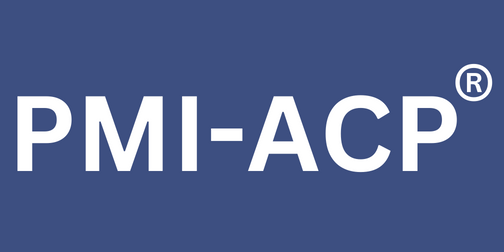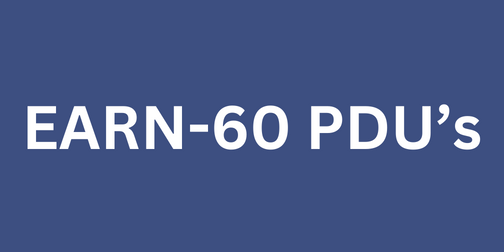Prince2 Agile Combo
PRINCE2 Agile® is a solution combining the flexibility and responsiveness of agile with the clearly defined framework of PRINCE2®. PRINCE2 Agile® framework covers a wide range of agile concepts, including SCRUM, Kanban and Lean Start-up. It provides guidance on tailoring PRINCE2® in an agile context and includes:
- How to tailor the integrated set of PRINCE2® principles, themes and processes
- How to produce the PRINCE2® management products
- How to map the common agile roles to the PRINCE2 project management team structure
- How to incorporate the fundamental agile behaviours, concepts and techniques into PRINCE2
- The strength of PRINCE2® lies in the areas of project direction and project management whereas agile has a very strong focus on product delivery. When PRINCE2® and agile are combined, Project direction, Project management and Project delivery are optimized to create a complete Project management solution.
PRINCE2 Agile® is an extension module tailored for forward-thinking organizations and individuals already benefiting from PRINCE2®. It provides further guidance on how to apply agile methods to the world's most recognized project management method. PRINCE2 Agile® has been developed as a single-tier Practitioner qualification. The purpose of the Practitioner qualification is to demonstrate that you can apply and tailor PRINCE2 Agile® in a scenario situation. The purpose of the Practitioner qualification is to demonstrate that you can apply and tailor PRINCE2 Agile® in a scenario situation.
Program Outline
PRINCE2 AGILE® Combo |
|||
|
msections Examsections E Exam sections msections xsections |
Learning Outcome (LO) |
|
|
|
6 x Multiple Choice Questions (MCQs) |
|
|
|
|
Understand the purpose and context for combining PRINCE2® and the agile way of working |
3. Be able to apply and evaluate the focus areas to a project in an agile context |
|
|
|
8 x MCQs using the scenario and one set of additional information |
4. Be able to fix and flex the six aspects of a project in an agile context |
|
|
|
12 x MCQs using the scenario and one set of additional information |
5. Be able to apply or tailor the PRINCE2 principles, themes, processes and management products to a project in an agile context |
|
|
|
50 MCQs |
100% |
|
|
|
LO |
Coursewarecontent(referencestothePRINCE2Agile®guideareinbrackets) |
|
1 |
ExplainthedifferencesbetweenprojectsandBAU(Businessasusual)(Figure1.1,Section1.2) |
|
Describeagileanditscommonapproaches,howandwhyagileapproacheshavedevelopedandwheretheyareused(Figure 2.3,Section2.1) |
|
|
Describethehistoryofagile,it’scontrasttothewaterfallwayofworkingandhowtheAgileManifestofits in(Figure2.1) |
|
|
Describethedifferentlevelsofagilematurityandwell-knownagileframeworks(Section2.2.1,Table2.1) |
|
|
Describebehaviours,conceptsandtechniquesthatcharacterizeagile(Section2.2.2,Table2.2) |
|
|
DefinethePRINCE2Agileviewof‘agile’(Section2.2) |
|
|
DescribeKanban,theKanbanmethodanditssixgeneralpractices,includingtheuseofCumulativeFlowDiagrams(CFDs)(Figure 20.2,Figure 20.4,Section20.4.1) |
|
|
DescribethecoreconceptsofLeanStart-up(Section20.4.2) |
|
|
Describetheuseofworkshops(Section26.4.1) |
|
|
Describehowtotransitiontoagile(AppendixF) |
|
|
DefineScrumtheoryandexplainthenatureoftheScrumteam,Scrumevents,ScrumartefactsandSprints (AppendixH) |
|
LO |
Coursewarecontent(referencestothePRINCE2Agile®guideareinbrackets) |
|
2 |
DescribethecomplementarystrengthsofPRINCE2andtheagilewayofworking(Section3.1,Figure3.1) |
|
Define who can benefit from using PRINCE2 Agile and in what contexts/situations (Section 3.1, Section 3.2,Section3.3) |
|
|
Define the make-up of PRINCE2 Agile (frameworks, behaviours, concepts, techniques, focus areas) (Section3.5, Figure 3.2) |
|
|
Explaintheeight‘guidancepoints’(Section3.6) |
|
|
Explain how PRINCE2 controls and governance can enable agile to be used in many environments (Section3.7) |
|
|
DescribewhatatypicalPRINCE2‘projectjourney’lookslikeinanagilecontext(Figure4.1,Section4.1) |
|
|
3 |
Explain the purpose and use of the Agilometer throughout a project (Section 24.1, Section 24.2, Section24.3) |
|
Describe the six sliders used on the Agilometer, explain their significance and how to improve them (Figure24.1, Section 24.4) |
|
|
Describeindetailrequirementsterminology,decompositionandprioritization,includingMoSCoWandOrdering (Figure 25.2,Section25.5,Table25.3) |
|
|
Explainhowrequirementsprioritizationisused(Figure25.2,Section25.5) |
|
|
Explain the rich communication focus area, its importance and its key techniques (Section 26.1, Section26.2, Section 26.3) |
|
|
Explainhowtomanagefrequentreleasesandthebenefitsof‘failingfast’(Section27.1,Section27.2) |
|
|
4 |
Describe how to use the ‘hexagon’ in relation to the six aspects of project performance (Figure 6.1, Section6.1) |
|
Explaintheuseoftolerancesintermsofwhatto‘fix’andwhatto‘flex’inrelationtothesixaspectsof projectperformance (Figure6.1,Section6.1,Table6.1) |
|
|
Describe in detail each of the five targets that underpin the use of the hexagon (Section 6.4, Section 6.5,Table6.2) |
|
|
Explainwhythe‘fixandflex’approachisgoodforthe customer(Section6.5) |
|
|
5 |
DescribeindetailthefivePRINCE2Agilebehaviours(Transparency,Collaboration,RichCommunication,Self-Organization, Exploration)(Section 7.4,Figure 7.1) |
|
ExplainthatagileneedstobeincorporatedinallsevenPRINCE2processesandallseventhemesbutthattheamount appropriate to each will vary depending on the project context (Section 8.1, Section 8.2, Figure16.2, Figure 16.3,Figure 16.4,Section16) |
|
|
DescribethetwocommonOrganizationrolesofScrummasterandProductowner(Section10.2.1) |
|
|
Explainhowtoadjustroles,includingtheuseofspecialistroles,andtheoptionsforteamorganizationinaproject(Section10.3,Section10.4, Section10.5.2, Table 10.1, Figure10.4, Figure10.5) |
|
|
Definethemake-upofatypicaldeliveryteam (Section10.4.2,Section10.4.3) |
|
|
Describeservantleadership,itsuseandimportance(Section10.5.1) |
|
|
DescribehowtodefineWorkingAgreements(Section10.5.3) |
|
|
Describe quality setting techniques including ‘definition of done’ and the use of acceptance criteria (Section11.2) |
|
|
Describe quality testing, quality checking and management techniques (Section 11.2, Section 11.3, Section20.3) |
|
|
Describeapproachestoplanningandtypicalplanningtechniques (Section12.3) |
|
|
Describeapproachestoriskandhowagileconceptsmitigatemanytypicalrisks(Section13.1,Section13.2) |
|
LO |
Coursewarecontent(referencestothePRINCE2Agile®guide areinbrackets) |
|
5 (cont) |
Describe how blending PRINCE2 with agile approaches controls, responds to, and minimizes the impact ofchange,includingriskmanagementandconfigurationmanagement(Section14.2,Section14.3) |
|
Describe how empowered self-organizing teams handle change dynamically within set tolerances (Section10.2, Section14.3.3) |
|
|
Describecommonfeedbackloopsandtheirimportance(Section14.4.1) |
|
|
Describeprogressmonitoringtechniquesincludinguseof‘workinprogress’boards,burncharts,informationradiators(Figure 15.1,Section15.2,Section15.3, Section15.4) |
|
|
Describe in detail agile techniques that may apply to each PRINCE2 process including Cynefin (Figure 17.3,Section17.3,Section 17.4) |
|
|
Describe how to flex the ‘Direct a Project’ stage and the benefits of collaborative working (Section 18.2,Section18.3) |
|
|
Describehowto‘managebyexception’withemphasisonempowerment,quantityofdeliverables,rich informationflowsandvalueofdeliverables(Section18.3) |
|
|
ExplainwhyPRINCE2‘stages’maynotberequired,includingtheuseoftimeboxesandScrumofscrums (Section19.2) |
|
|
Describe typical output mechanisms when ‘Controlling a Stage’ and ‘Managing a Stage Boundary’ (Section19.2, Section 19.3,Section 21.3, Section 21.4) |
|
|
Describetheuseofretrospectivesandhowtomakethemeffective(Section19.4.1) |
|
|
DescribeapproachestomanagingproductdeliveryincludingScrumandKanban(Section20.2) |
|
|
ExplainhowtodefineWorkPackages,ProductDescriptions,qualitycriteriaandtolerances(Section20.3) |
|
|
Giveguidanceonbehaviours,riskandthefrequencyofreleases(Section20.3) |
|
|
Explainhowtomanagestageboundariesandthesimilaritiesbetweenastageandarelease(Section21.2) |
|
|
Explainhowtoassessquantity,qualityandbenefitsofstagedeliverables(Section21.3) |
|
|
Explain how to effectively close a project, including evaluation of the use of agile (Section 22.2, Section22.3, Section 22.4) |
|
|
DescribehowtotailorPRINCE2products,includingWorkPackages,HighlightReportsandCheckpointReports(Chapter 23) |
|
|
DescribeindetailagiletechniquesthatmayapplytoeachPRINCE2themeincludingrequirements,definingvalueand user stories(Figure25.3,Section9.4.1, Section 25.1, Section25.6.1) |
|
|
Describeguidanceontheuseofcontracts (Section28.3) |
|
|
DescribePRINCE2Agiledeliveryroles(AppendixA,AppendixB) |
|
|
ExplainhowtousetheHealthCheck(AppendixC) |
|
|
Describethefundamentalvaluesandprinciplesofagile(AppendixE) |
|
|
OutlinetipsforthePRINCE2Agileprojectmanager(AppendixG) |
- Promotes consistency of project work and the ability to reuse project assets; it also facilitates staff mobility and reduces the impact of personnel changes/handovers.
- Is an invaluable diagnostic tool, facilitating the assurance and assessment of project work, troubleshooting and audits.
- Plans are carefully designed to meet the needs of the different levels in the management group, improving communication and control.
- Ensures that participants focus on the viability of the project in relation to its Business Case objectives - rather than simply seeing the completion of the project as an end in itself.
- Defines a thorough but economic structure of reports.
- Ensures that stakeholders (including sponsors and resource providers) are properly represented in planning and decision making.
- Foundation/Practitioners Level Training & Certification based PRINCE2® Official Manual.
- Absolute Value for Money - Lowest Price in India
- Pass in your First Attempt!
- Re-Exam Fee is paid by us if you fail the exam
- Axelos Accredited, PMP® Certified, Microsoft® Project Certified Trainer
- Axelos Accredited (ATO) Authorized testing organization
- World Class Courseware
- Unique blend of Self-Study and Classroom Action
- Excellent Opportunity PDU available for PMP's
- Exam on the last day!
- Four day course
- Free Project Management Templates
- Real time Case Studies and Examples
- Assess Participant's Profile
- Provide a Road Map for PRINCE2® Agile Certification
- Share Details about Costs associated with the PRINCE2® Agile Exam
- Query Handling Facility over E-mail
- PRINCE2® Agile Exam Mock Questions
- Customer Support over E-mail
 Benefits of PRINCE2 Agile
Benefits of PRINCE2 Agile
 Salient Features
Salient Features
 What Can KnowledgeWoods Do For You?
What Can KnowledgeWoods Do For You?
>











